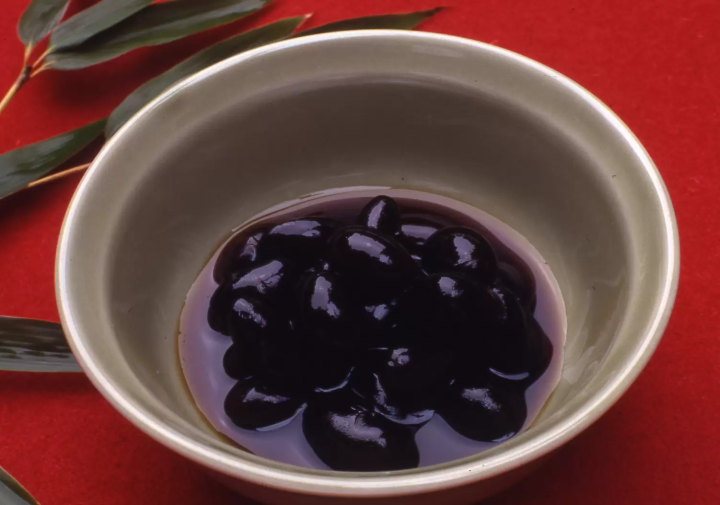Cultivation of "Tambasasayama Black Soybeans" begins

The cultivation of black soybeans, which has a 300-year history, will soon begin in Tambasasayama City, Hyogo Prefecture. Tambasasayama's black soybean cultivation was certified as a "Japanese Agricultural Heritage" in 2021. Please come and see for yourself the black soybean cultivation that has been handed down from generation to generation through the tireless efforts of our predecessors.
-
Table of Contents
- Tambasasayama black soybeans
- Black soybean cultivation in Tambasasayama
Tambasasayama black soybeans
Tambasasayama City's "black soybeans" are very large and have a deep flavor, making them popular throughout Japan. Not only are they indispensable in New Year's osechi cuisine, but "black edamame" harvested before they are ripe are also popular among many gourmet enthusiasts.
It has a long history, with cultivation having begun more than 300 years ago, and was presented to the shogunate during the Edo period. The "Ryori Moumoku Chomisho", published during the Edo period, states that "black beans are a specialty of Tambasasayama" and "black beans from Tambasasayama are good, pressed in soup, and boiled," showing that black soybeans from Tambasasayama were highly regarded even back then.
Furthermore, genetic analysis by Hyogo Prefecture has revealed that Japan's major black soybeans and black edamame are the result of selective breeding of black soybeans grown in the Tambasasayama region, meaning that the black soybeans produced in Tambasasayama are the "original" and "real" black soybeans.

Black soybean cultivation in Tambasasayama
"Black soybean cultivation in Tambasasayama" was recognized as a "Japanese Agricultural Heritage" by the Ministry of Agriculture, Forestry and Fisheries in 2021.
The certification was evaluated based on three main points.
The first is the "dry paddy high ridge cultivation technique." Tambasasayama has always had little rain, so there was a lack of irrigation water for the paddy fields, and so rice cultivation was stopped and "sacrificial fields" were established in the villages, where black soybeans were cultivated. However, many of the paddy fields were overly wet and had heavy clay marshes, making them unsuitable for cultivating black soybeans. So the paddy fields were carved high to create ridges, and then dried, transforming them into fields where black soybeans could be cultivated. This scene can still be seen today, and fields with high ridges and wide furrows have been passed down to the present day.
The second is a high-quality seed production method. This involves selecting and cultivating large, high-quality seeds, and dates back to the late Edo period. The headman of the village, Habe Honjiro, and others selected and cultivated high-quality seeds, distributing them throughout Tamba sasayama for cultivation. Currently, seed production is sustained, with collection fields set up in various locations throughout the city.
The third is the natural circulation system. In the Tambasasayama region, where there is little rain, many reservoirs have been constructed and rare amphibians live there. In addition, ash huts were built to produce and store valuable ash for use in soil improvement and fertilizer, and trees, fallen leaves, straw, etc. from the mountains were piled up with soil and burned to make ash fertilizer. This is a highly sustainable system in which natural resources are circulated, but it is currently being lost in Japan due to field improvement projects and other reasons. Approximately 240 ash huts remain in Tambasasayama, making it a rare rural landscape even when viewed nationally.
These cultivation techniques are still alive in Tambasasayama today. Even if Tambasasayama black soybean seedlings are cultivated in other regions, the same quality of black soybeans cannot be produced; they are only possible thanks to the natural environment of Tambasasayama and the cultivation techniques handed down from our predecessors.

Tambasasayama is a town full of history and tradition. In the center of Tambasasayama City is the ruins of Sasayama Castle. Today, the magnificent stone walls still remain as they were back then, and the castle townscape extends around them. The townscape and culture of Tambasasayama are strongly influenced by Kyoto, and if you actually walk around the castle town, you are sure to find Kyoto-like townscapes here and there.
The contents on this page may partially contain automatic translation.
































![[Coupon Available] Attention Overseas Winter Sports Fans! Nagano's Sports Depot Has Evolved](https://resources.matcha-jp.com/resize/720x2000/2026/01/05-254819.webp)
![[2 hours from Tokyo ] 10 Quiet and Breathtaking Views of Mount Fuji in Yamanashi Hokuto City , Yamanashi - Part 2](https://resources.matcha-jp.com/resize/720x2000/2025/12/16-253037.webp)

![[Reopening in March 2026] Ikoma Sanjo Amusement Park Park, 45 minutes from Osaka , with free admission](https://resources.matcha-jp.com/resize/720x2000/2024/08/28-194409.webp)